Abstract
1. Neuromuscular blocking agents have been shown to be powerful inhibitors of choline transport in human erythrocytes. Ganglionic blocking agents were weaker inhibitors.
2. The affinity of the choline transport site for alkyltrimethylammonium compounds was considerably higher than its affinity for alkyl-bis-(trimethylammonium) compounds of similar chain length. The affinity increases with increasing length of the alkyl chain in both series.
3. Tetramethylammonium (TMA), ethyl- and propyltrimethylammonium appear to enter the cells on the choline carrier while the larger monoquaternary compounds, and the bisquaternary compounds, bind to the carrier but are unable to cross the cell membrane.
4. Radioactively labelled carbachol, acetylcholine and decamethonium do not enter the cells on the choline carrier.
5. Choline transport in erythrocytes from patients with myasthenia gravis is normal, suggesting that this disorder is not associated with a generalized defect of choline transport.
Full text
PDF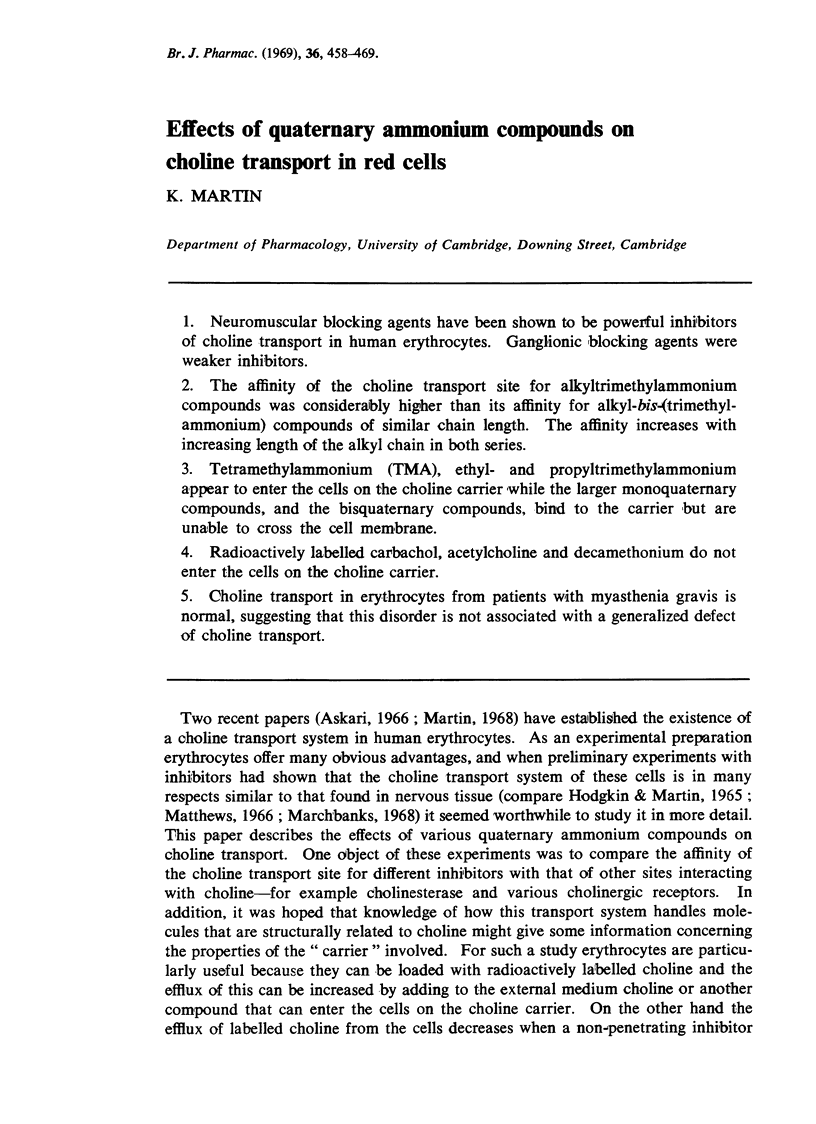
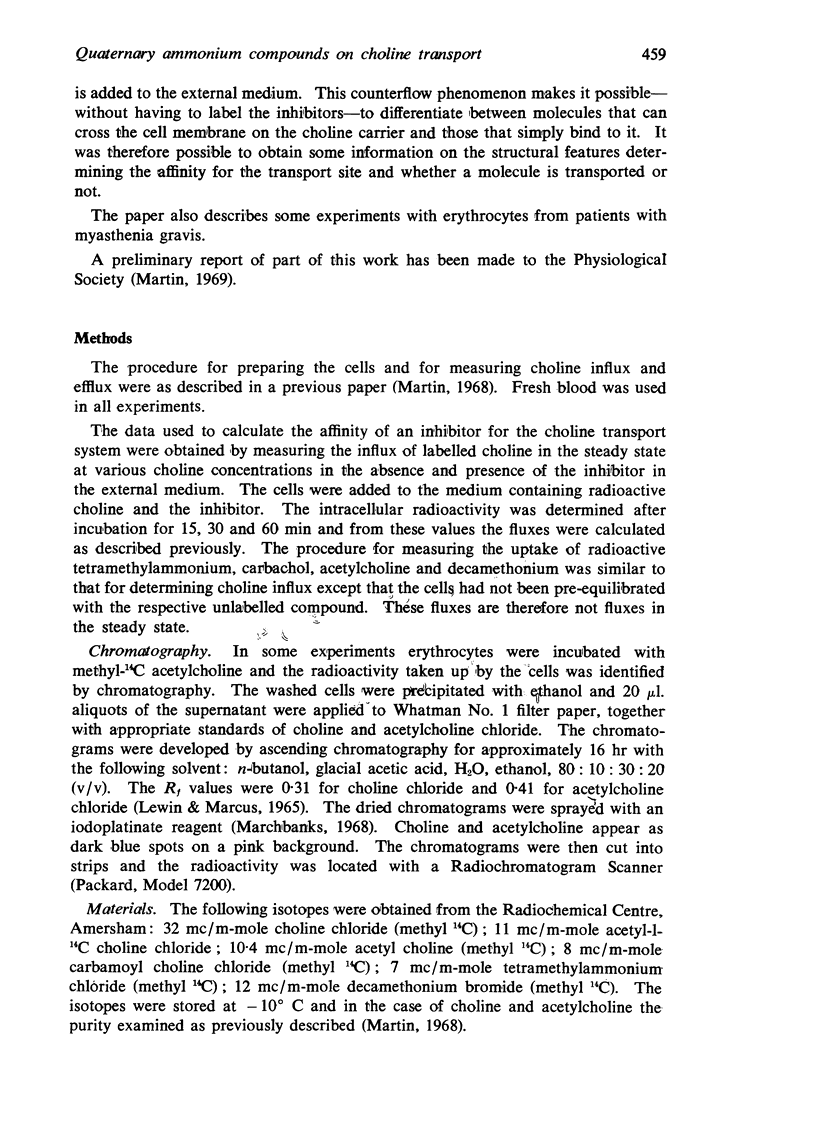

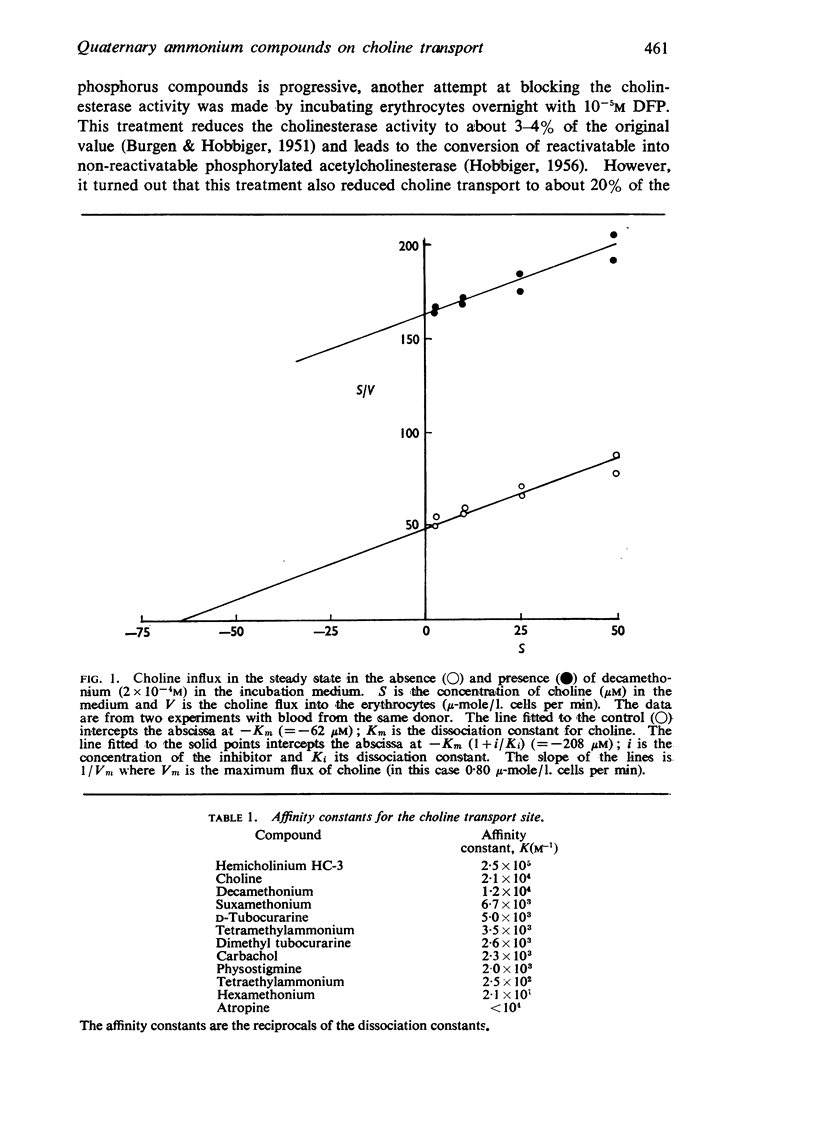

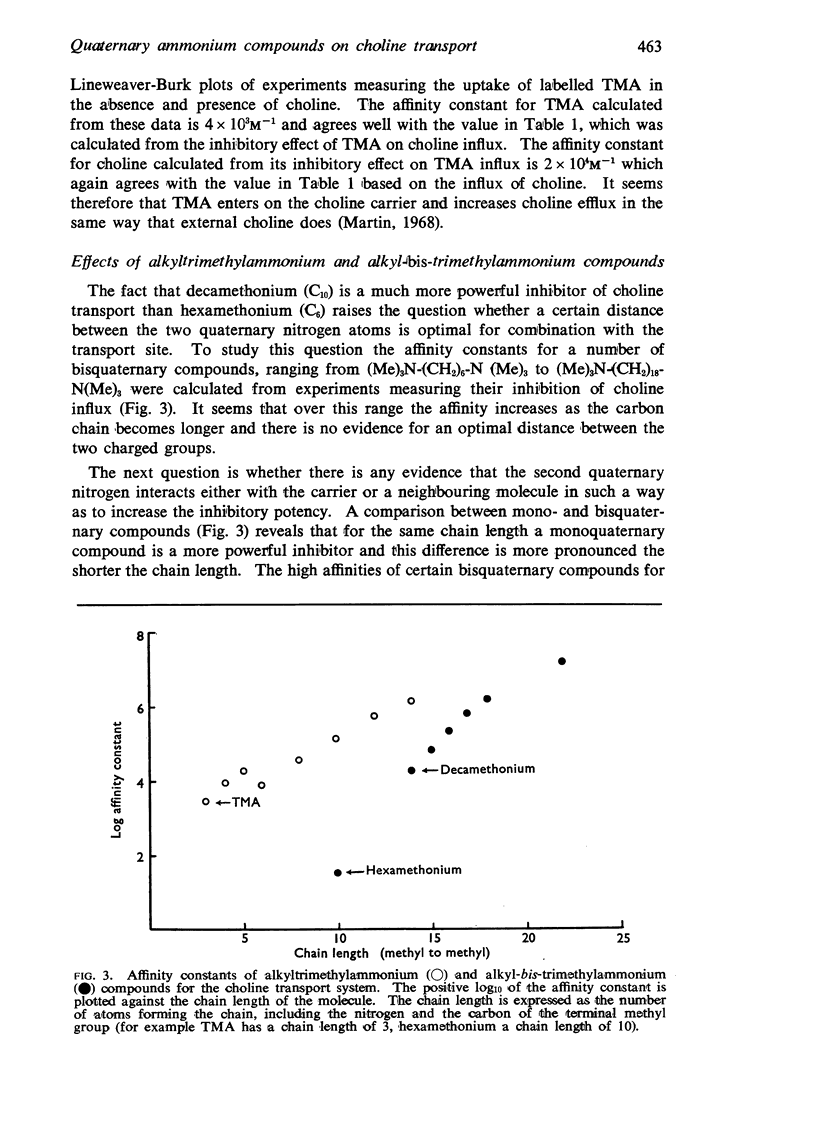
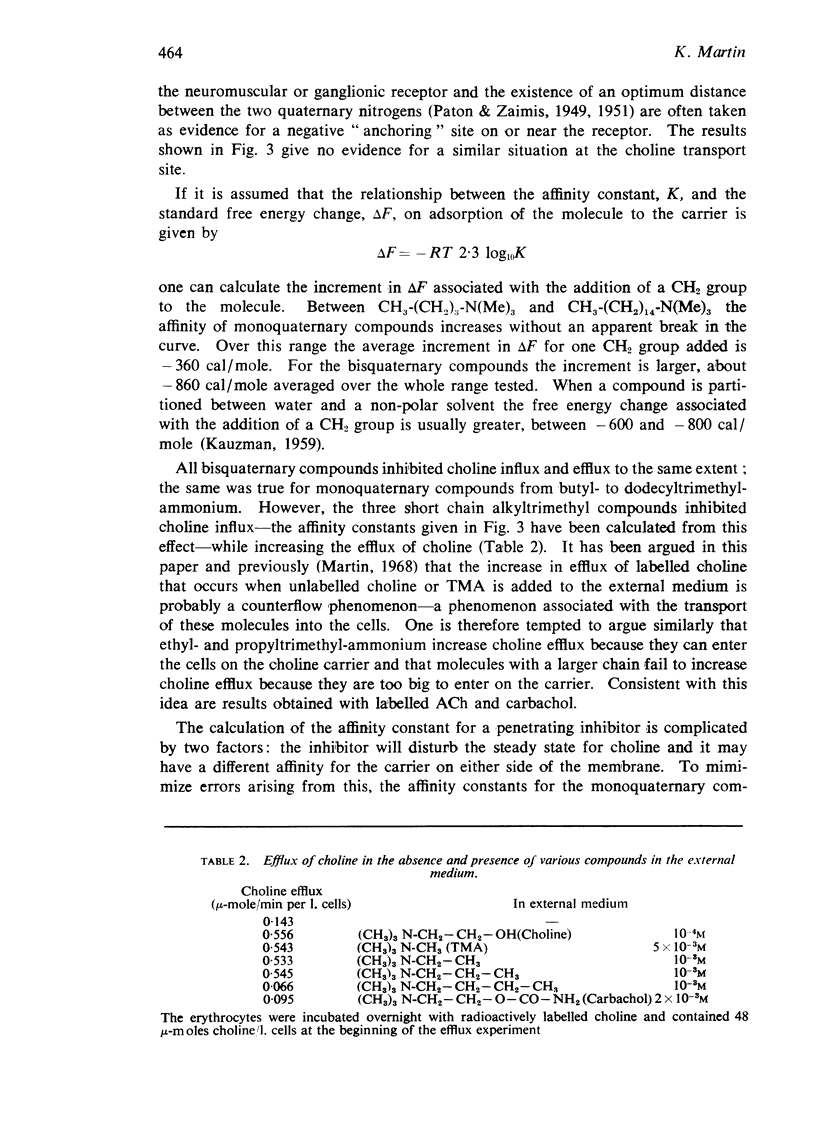

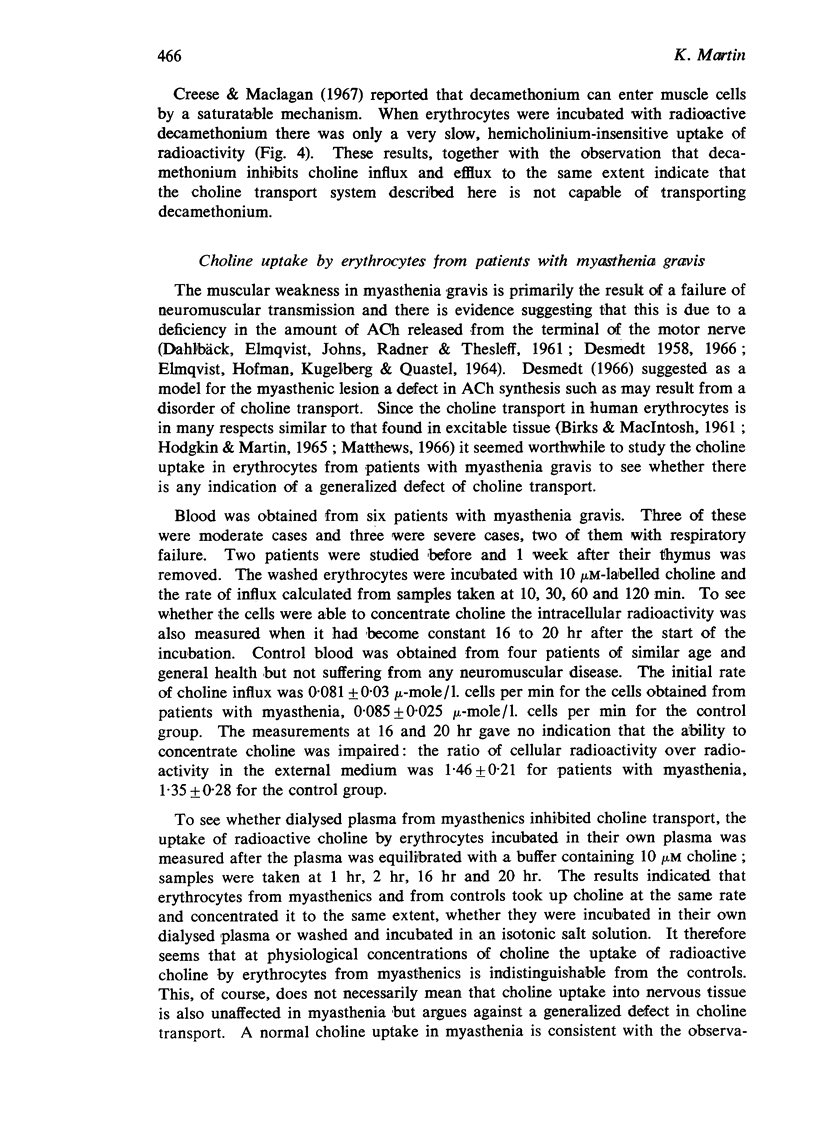
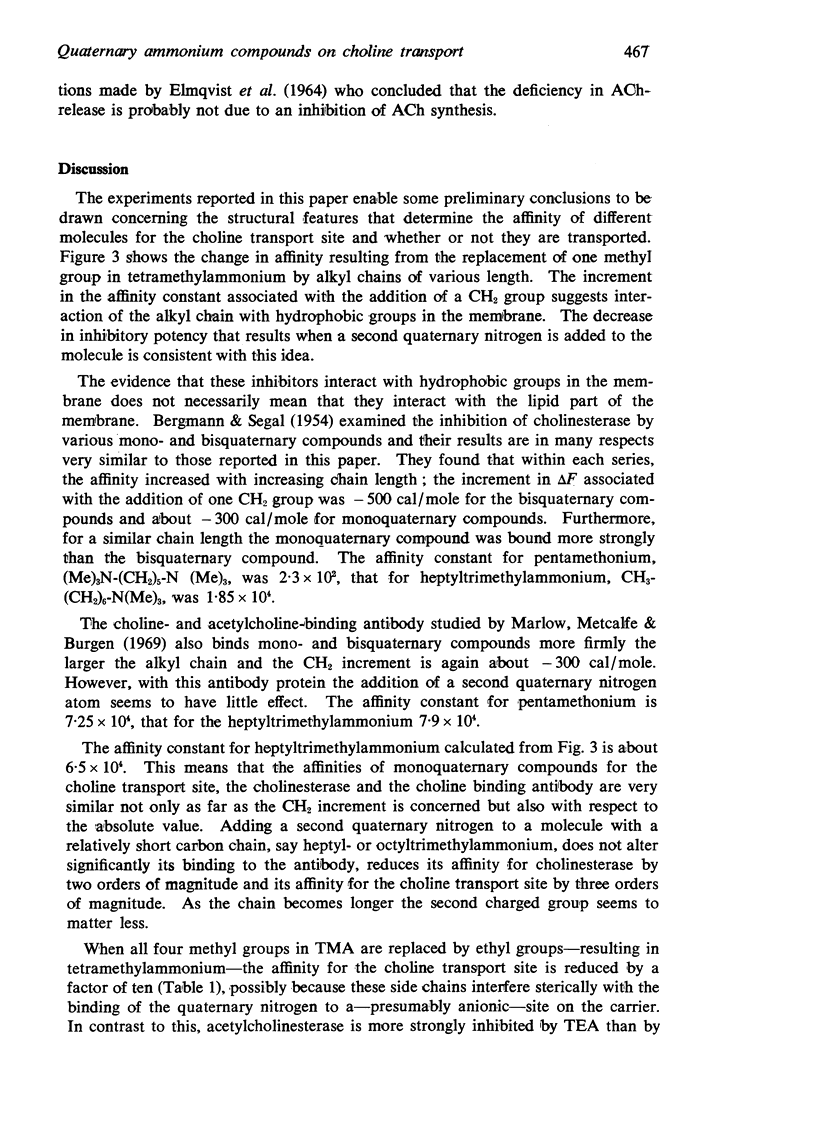

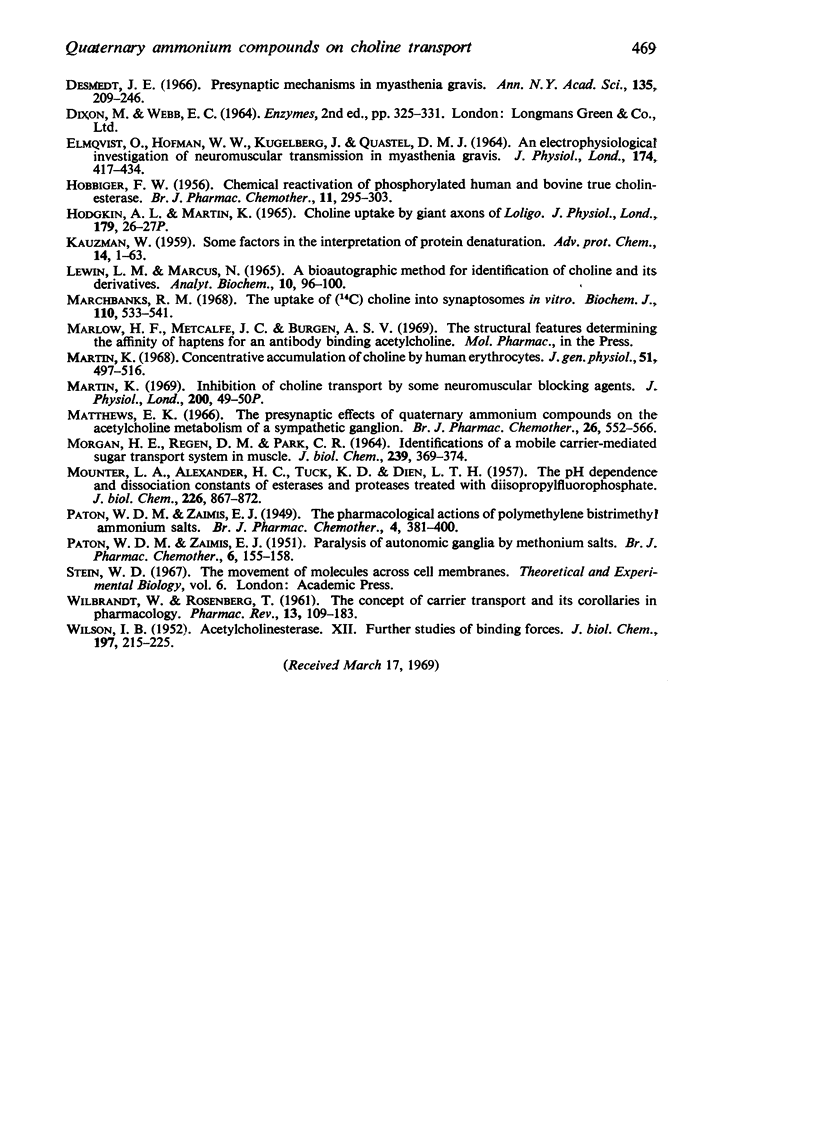
Selected References
These references are in PubMed. This may not be the complete list of references from this article.
- Askari A. Uptake of some quaternary ammonium ions by human erythrocytes. J Gen Physiol. 1966 Jul;49(6):1147–1160. doi: 10.1085/jgp.0491147. [DOI] [PMC free article] [PubMed] [Google Scholar]
- BERGMANN F., SEGAL R. The relationship of quaternary ammonium salts to the anionic sites of true and pseudo cholinesterase. Biochem J. 1954 Dec;58(4):692–698. doi: 10.1042/bj0580692. [DOI] [PMC free article] [PubMed] [Google Scholar]
- BURGEN A. S. V., HOBBIGER F. The inhibition of cholinesterases by alkyl-phosphates and alkylphenolphosphates. Br J Pharmacol Chemother. 1951 Dec;6(4):593–605. doi: 10.1111/j.1476-5381.1951.tb00670.x. [DOI] [PMC free article] [PubMed] [Google Scholar]
- Creese R., Maclagan J. Autoradiography of decamethonium in rat muscle. Nature. 1967 Aug 26;215(5104):988–989. doi: 10.1038/215988a0. [DOI] [PubMed] [Google Scholar]
- Creese R., Taylor D. B. Entry of labeled carbachol in brain slices of the rat and the action of d-tubocurarine and strychnine. J Pharmacol Exp Ther. 1967 Aug;157(2):406–419. [PubMed] [Google Scholar]
- DAHLBACK O., ELMQVIST D., JOHNS T. R., RADNER S., THESLEFF S. An electrophysiologic study of the neuromuscular junction in myasthenia gravis. J Physiol. 1961 Apr;156:336–343. doi: 10.1113/jphysiol.1961.sp006679. [DOI] [PMC free article] [PubMed] [Google Scholar]
- DESMEDT J. E. Myasthenic-like features of neuromuscular transmission after administration of an inhibitor of acetylcholine synthesis. Nature. 1958 Dec 13;182(4650):1673–1674. doi: 10.1038/1821673a0. [DOI] [PubMed] [Google Scholar]
- Desmedt J. E. Presynaptic mechanisms in myasthenia gravis. Ann N Y Acad Sci. 1966 Jan 26;135(1):209–246. doi: 10.1111/j.1749-6632.1966.tb45474.x. [DOI] [PubMed] [Google Scholar]
- ELMQVIST D., HOFMANN W. W., KUGELBERG J., QUASTEL D. M. AN ELECTROPHYSIOLOGICAL INVESTIGATION OF NEUROMUSCULAR TRANSMISSION IN MYASTHENIA GRAVIS. J Physiol. 1964 Nov;174:417–434. doi: 10.1113/jphysiol.1964.sp007495. [DOI] [PMC free article] [PubMed] [Google Scholar]
- HOBBIGER F. Chemical reactivation of phosphorylated human and bovine true cholinesterases. Br J Pharmacol Chemother. 1956 Sep;11(3):295–303. doi: 10.1111/j.1476-5381.1956.tb01069.x. [DOI] [PMC free article] [PubMed] [Google Scholar]
- LEWIN L. M., MARCUS N. A BIOAUTOGRAPHIC METHOD FOR IDENTIFICATION OF CHOLINE AND ITS DERIVATIVES. Anal Biochem. 1965 Jan;10:96–100. doi: 10.1016/0003-2697(65)90242-3. [DOI] [PubMed] [Google Scholar]
- MORGAN H. E., REGEN D. M., PARK C. R. IDENTIFICATION OF A MOBILE CARRIER-MEDIATED SUGAR TRANSPORT SYSTEM IN MUSCLE. J Biol Chem. 1964 Feb;239:369–374. [PubMed] [Google Scholar]
- MOUNTER L. A., ALEXANDER H. C., 3rd, TUCK K. D., DIEN L. T. The pH dependence and dissociation constants of esterases and proteases treated with diisopropyl fluorophosphate. J Biol Chem. 1957 Jun;226(2):867–872. [PubMed] [Google Scholar]
- Marchbanks R. M. The uptake of [14C] choline into synaptosomes in vitro. Biochem J. 1968 Dec;110(3):533–541. doi: 10.1042/bj1100533. [DOI] [PMC free article] [PubMed] [Google Scholar]
- Martin K. Concentrative accumulation of choline by human erythrocytes. J Gen Physiol. 1968 Apr;51(4):497–516. doi: 10.1085/jgp.51.4.497. [DOI] [PMC free article] [PubMed] [Google Scholar]
- Matthews E. K. The presynaptic effects of quaternary ammonium compounds on the acetylcholine metabolism of a sympathetic ganglion. Br J Pharmacol Chemother. 1966 Mar;26(3):552–566. doi: 10.1111/j.1476-5381.1966.tb01836.x. [DOI] [PMC free article] [PubMed] [Google Scholar]
- PATON W. D. M., ZAIMIS E. J. Paralysis of autonomic ganglia by methonium salts. Br J Pharmacol Chemother. 1951 Mar;6(1):155–168. doi: 10.1111/j.1476-5381.1951.tb00631.x. [DOI] [PMC free article] [PubMed] [Google Scholar]
- PATON W. D. M., ZAIMIS E. J. The pharmacological actions of polymethylene bistrimethyl-ammonium salts. Br J Pharmacol Chemother. 1949 Dec;4(4):381–400. doi: 10.1111/j.1476-5381.1949.tb00565.x. [DOI] [PMC free article] [PubMed] [Google Scholar]
- WILBRANDT W., ROSENBERG T. The concept of carrier transport and its corollaries in pharmacology. Pharmacol Rev. 1961 Jun;13:109–183. [PubMed] [Google Scholar]
- WILSON I. B. Acetylcholinesterase. XII. Further studies of binding forces. J Biol Chem. 1952 May;197(1):215–225. [PubMed] [Google Scholar]


